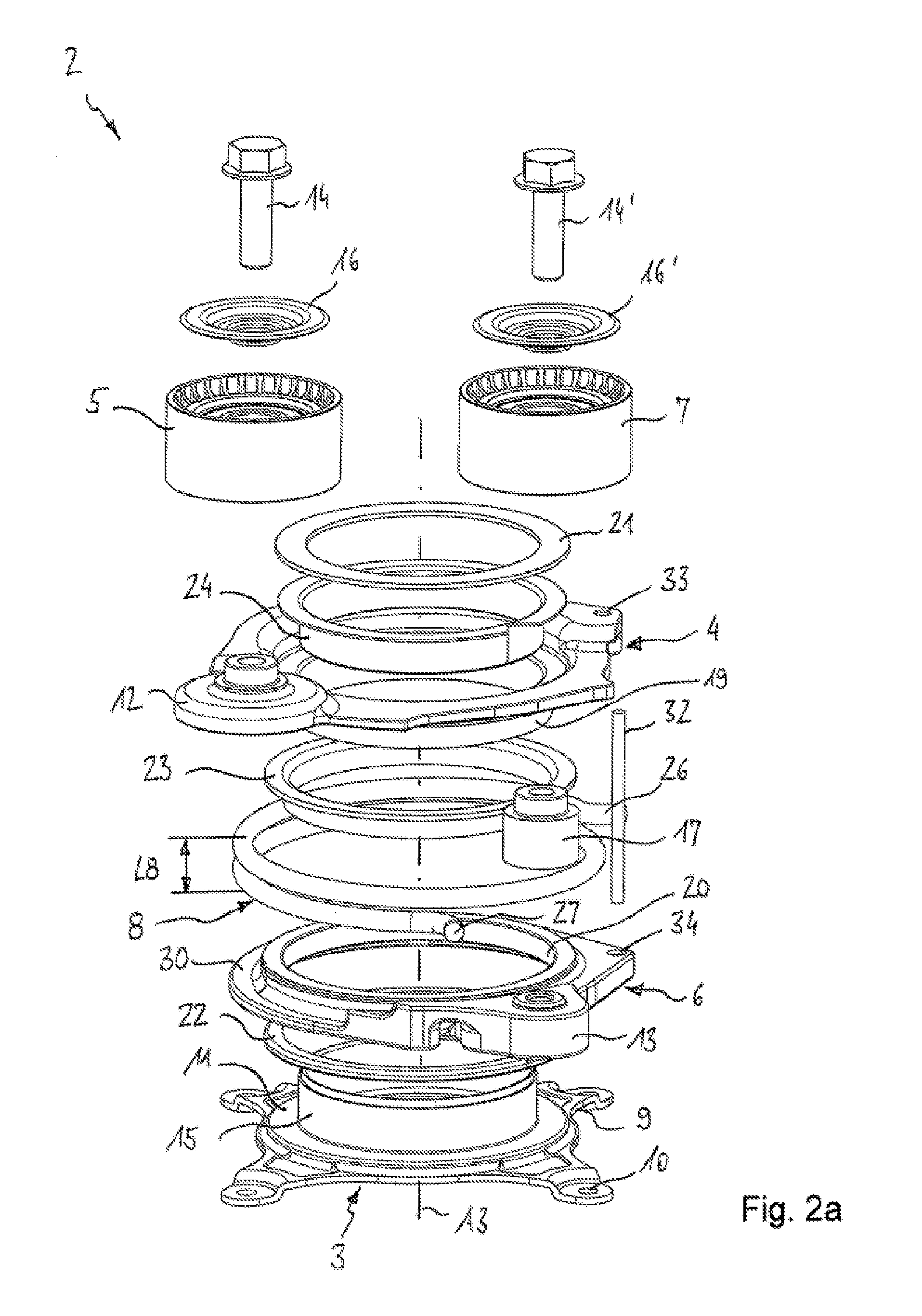Spring, Belt Tensioning Device, and Assembly
a belt tensioning device and belt tensioning technology, which is applied in the direction of belt/chain/gearing, mechanical equipment, wound springs, etc., can solve the problems of increased wear, difficult mounting of belts, and limited installation space around the generator axis as well as before and behind the belt plane, etc., to achieve compact design, convenient mounting, and compact construction
- Summary
- Abstract
- Description
- Claims
- Application Information
AI Technical Summary
Benefits of technology
Problems solved by technology
Method used
Image
Examples
Embodiment Construction
[0038]FIGS. 1a) to 1d), which are commonly described in the following, show a spring 8 according to the invention in a first embodiment. The spring 8 has approximately 1.5 coils, or windings. In other words, the spring extends across 540° around the spring axis A8, wherein also any other number of coils between a minimum of 1.25 and a maximum of 2.5 (450° and 900°) may be considered. The spring 8 has, starting from a first end portion 26, bent radially outward, a first coil portion 43, which extends in a plane E43 with a constant radius R43 over an angle range of approximately 110° to 120° around the spring axis A8. A coil portion means, that the spring is wound in this portion around the spring axis with a concave inner curvature. The plane E43 which is defined by the first coil portion 43, is arranged substantially at a right angle to the spring axis A8. The first coil portion 43 without an incline is followed by a transition—or incline portion 44, which extends across an angle ra...
PUM
 Login to View More
Login to View More Abstract
Description
Claims
Application Information
 Login to View More
Login to View More - R&D
- Intellectual Property
- Life Sciences
- Materials
- Tech Scout
- Unparalleled Data Quality
- Higher Quality Content
- 60% Fewer Hallucinations
Browse by: Latest US Patents, China's latest patents, Technical Efficacy Thesaurus, Application Domain, Technology Topic, Popular Technical Reports.
© 2025 PatSnap. All rights reserved.Legal|Privacy policy|Modern Slavery Act Transparency Statement|Sitemap|About US| Contact US: help@patsnap.com



